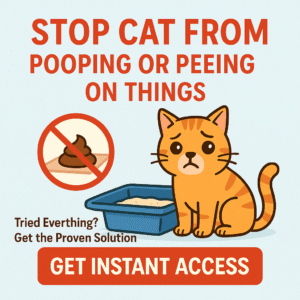Feline leukemia virus (FeLV) is a contagious viral infection that weakens a cat’s immune system, making them more susceptible to other illnesses. While a diagnosis of FeLV can be overwhelming, many affected cats can live happy, comfortable lives with the right care—especially when it comes to nutrition. A high-quality, immune-supportive diet can help your FeLV-positive cat maintain strength, resist infections, and enjoy more good days.
Understanding Feline Leukemia Virus (FeLV)
FeLV is spread primarily through saliva, shared bowls, grooming, and sometimes from mother to kittens. It can lead to chronic infections, anemia, cancer, and slow healing. Many cats show no symptoms at first, but over time, they may develop:
- Recurring infections (gums, mouth, skin, or respiratory)
- Poor appetite and weight loss
- Lethargy and weakness
- Pale gums, fever, or swollen lymph nodes
- Poor coat quality
There is no cure for FeLV, but supportive care—including optimal nutrition—can extend both the quality and length of your cat’s life.
Dietary Goals for Cats with Leukemia Virus
- Support immune function: Good nutrition keeps your cat’s defenses as strong as possible and helps them recover from minor infections.
- Maintain weight and muscle mass: Many FeLV cats are prone to weight loss, so palatable, calorie-dense food is important.
- Ensure high digestibility: Sick or immunocompromised cats need food that is easy to digest and absorb.
- Include key nutrients: Omega-3 fatty acids, antioxidants (vitamin E, vitamin C, beta-carotene), and B vitamins help fight inflammation and oxidative stress.
- Promote hydration: Wet/canned food is preferred, especially for cats with fever, mouth ulcers, or poor appetite.
Best Cat Food Features for FeLV-Positive Cats
- High-quality animal protein: Real meat, poultry, or fish as the first ingredient supports tissue repair and immune health.
- High moisture content: Wet/canned foods are gentler on sore mouths and encourage hydration.
- Calorie-dense and palatable: Strong aroma and taste help stimulate appetite in picky or sick cats.
- Added antioxidants and omega-3s: Look for foods with vitamin E, C, beta-carotene, fish oil, or flaxseed for immune and anti-inflammatory support.
- Limited fillers and by-products: Avoid foods high in corn, wheat, soy, or artificial additives that can stress digestion or trigger allergies.
Top Cat Foods for Cats with Leukemia Virus
1. Hill’s Science Diet Adult Indoor (Wet)
- High in moisture, animal protein, and antioxidants for immune health.
- Gentle on digestion and easy for cats with mouth pain or ulcers to eat.
- No artificial colors or preservatives.
2. Royal Canin Feline Health Nutrition (Thin Slices in Gravy, Wet)
- Highly palatable texture and strong aroma encourage eating.
- Balanced nutrients, antioxidants, and easy-to-chew slices.
- Supports hydration and general well-being.
3. Blue Buffalo Wilderness High Protein (Wet)
- Grain-free, high in real meat, and rich in antioxidants and omega-3s.
- Soft texture suits cats with sensitive mouths or dental issues.
- No by-products or artificial additives.
4. Instinct Original Grain-Free Pâté (Wet)
- Real meat as the first ingredient, grain-free, and gentle on digestion.
- High moisture and easy-to-eat pâté texture.
- Includes omega-3s and no artificial preservatives.
5. Weruva Cats in the Kitchen (Wet)
- Shredded meat in broth, high moisture, calorie-dense, and easy to eat.
- Lower in fillers, higher in real meat and hydration.
- Great for cats with variable appetites or dental discomfort.
Practical Feeding Tips for FeLV-Positive Cats
- Feed small, frequent meals: If your cat’s appetite is low, try several small meals daily instead of one or two big ones.
- Warm food slightly: Warming food enhances aroma and may entice cats with stuffy noses or mouth pain.
- Keep food and water dishes clean: Reduce infection risk by washing bowls daily.
- Use appetite stimulants or supplements only as prescribed: Do not use supplements or home remedies without veterinary approval.
- Encourage hydration: Use water fountains, broths, or add extra water to wet food for cats reluctant to drink.
Foods and Ingredients to Avoid
- Raw meat or unpasteurized dairy (immune-compromised cats are at higher risk of infection)
- Excessive fish (can interfere with vitamin E absorption if fed exclusively)
- Foods with artificial preservatives, dyes, or high levels of salt
- Low-quality brands full of by-products or fillers
When to See the Vet
- If your cat stops eating for more than 24 hours
- If there is vomiting, diarrhea, rapid weight loss, or signs of infection (fever, swelling, discharges)
- Any change in behavior, breathing, or mobility
FeLV is a serious medical condition that requires regular veterinary care, bloodwork, and sometimes medications or supportive therapies.
The Bottom Line
The best cat food for leukemia virus is wet, high in animal protein, calorie-rich, and loaded with antioxidants and omega-3s for immune support. Avoid raw, low-quality, or filler-heavy foods. Work closely with your veterinarian for ongoing care, and with the right nutrition, many FeLV-positive cats can enjoy comfortable, meaningful lives for years.
This article is for informational purposes only. Always consult your veterinarian for dietary and medical guidance when caring for a cat with leukemia virus or any chronic illness.
